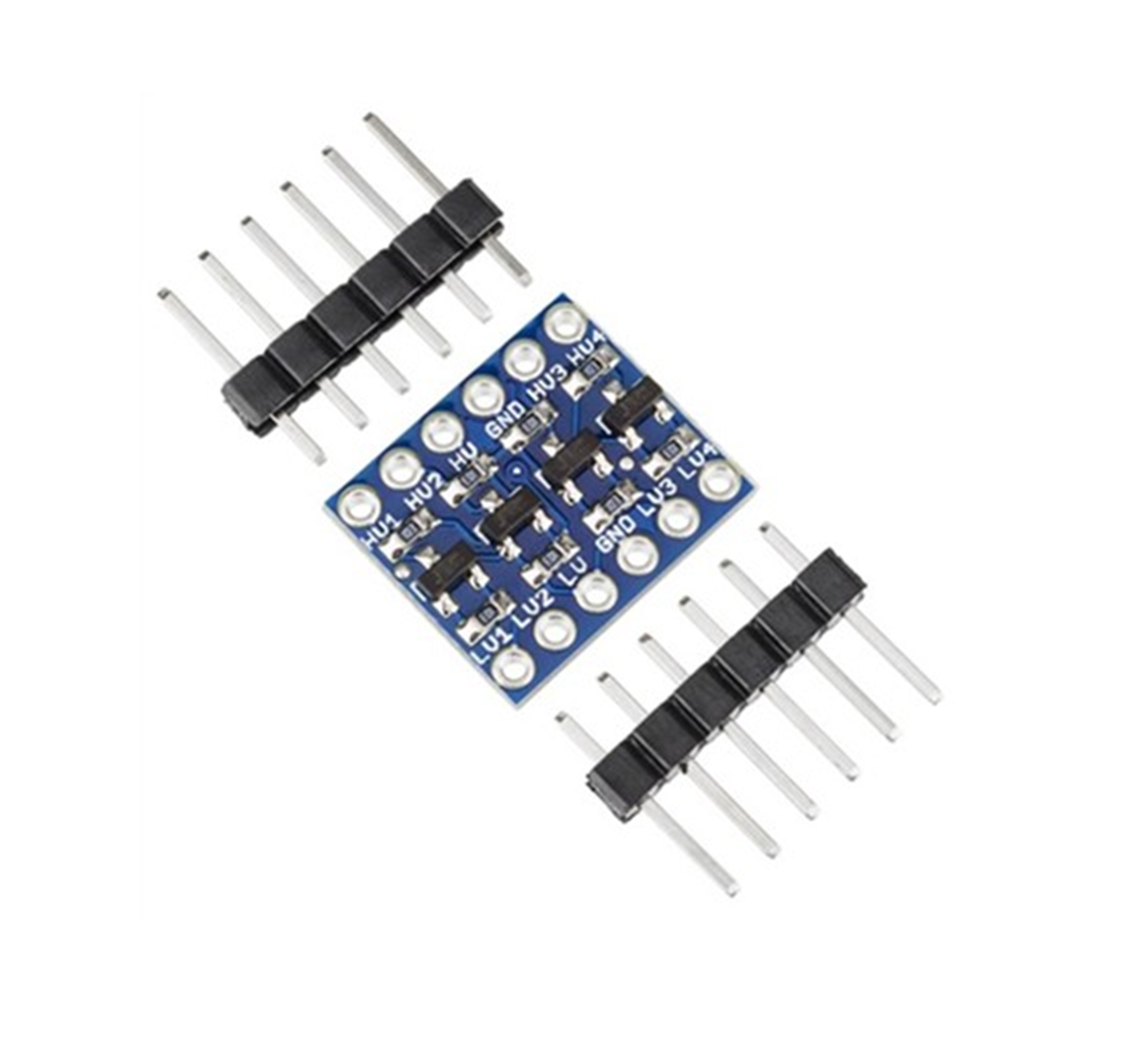4 Channel Bi-Directional Level Shifter Module
Product Dimensions and Weight
Description
4 Channel Bi-Directional Level Shifter Module
The Logic Level Converter 4-Ch Bi-Directional Module allows you to connect 3.3V and 5V logic circuits together.
KEY FEATURES OF LOGIC LEVEL CONVERTER 4-CH BI-DIRECTIONAL MODULE:
- 4 channels can convert up to 4 logic signals
- Can convert between 1.8V, 2.8V, 3.3V and 5V logic circuits
- Bi-directional so can work with bi-directional buses such as I2C
- Utilizes N-Ch MOSFET transistors for level translation
This module is typically used to connect 3.3V and 5V logic signals together, but it is compatible with many different logic voltages including 1.8V and 2.8V as found in some of the newer devices. It will also work with most oddball voltages if you have some special conversion requirement.
There are 4 bi-directional channels which is especially useful for buses such as I2C that pass data in both directions. It can also be used for unidirectional signals like TTL serial communications as well as standard logic signals.
The circuit makes clever use of N-Channel MOSFET transistors and some pull-up resistors to take care of the voltage translation.
Module Operation.
To use the module, you hook up the two voltages that you want to convert between to the LV (low Voltage) and HV (High Voltage) inputs. The higher voltage is always connected to the HV side.
If using with an Arduino, you would typically connect the 3.3V output of the Arduino to the Low Voltage (LV) input and the 5V output of the Arduino to the High Voltage (HV) input.Bi-Directional Level Shifter Circuit 2.
There are two grounds on the board as well. These aren’t used by the circuit on the board, but can be used to pass a ground connection along with the data between the systems if it is needed.
You then hook-up the lower voltage logic signals to the LV1-LV4 pins and the higher voltage logic signals to the corresponding HV1-HV4 pins (LV1 connects to HV1, etc) and you are set to go. There is no direction control required for the bi-directional functionality.
The module comes with 2 strips of male headers. These can be soldered on for use on a breadboard, or you can attach wires directly to the board depending on what your application requires. If soldering the headers on, it is recommended to insert the headers into a solderless breadboard first to hold them in alignment while soldering.
The board has the following I/O connections:
HV = High voltage. Must be higher voltage than LV. Typically tied to 5V
LV = Low voltage. Must be lower voltage than HV. Typically tied to 3.3V
GND = Ground (x2). Can be used to pass a ground between the two different voltage circuits
HV1 / LV1 = Channel 1
HV2 / LV2 = Channel 2
HV3 / LV3 = Channel 3
HV4 / LV4 = Channel 4
These modules work very well and are an easy way to implement level shifting. You can convert between pretty much any two logic voltage levels that you will find in electronics like 5V and 2.8V.
The 10K pull-up resistors tend to be the limiting factor for the maximum switching speed that can be obtained with these modules depending on the capacitive load. 400KHz operation is usually possible. If you are trying to push the speed boundaries and are seeing data glitches, lower value pull-up resistors can be used to speed up rise-times.
The TXS0108E module at the bottom of the page is an option for bi-directional level shifting at higher speeds.
Because of their inherent speed limitation, these modules are not a good choice for SPI bus level conversion and we don’t recommend them for that purpose. Our Hi-Speed SPI Level Converter at the bottom of the page is a much better fit for SPI conversion.
Συνδεσμολογία :

 English
English  Greek
Greek







